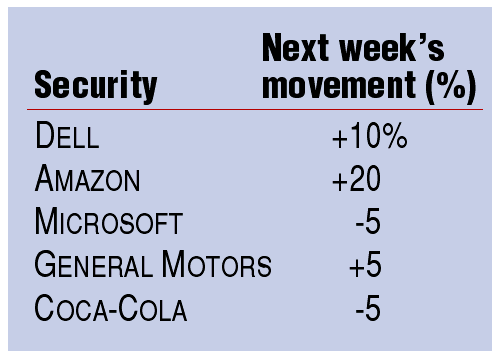QUANTITATIVE ANALYSIS
Create Portfolios Based On Your Risk And Return Preferences
Optimizing Portfolios
Using Value At Risk
by Luis Ballescá-Loyo
Most of us own more than one security at any given time. But how do you decide which ones to hold and which ones to fold?
In my August 1999 article, I described how to set the size of a long stock position based on your own risk aversion and stock price volatility. But this methodology cannot be extrapolated for those portfolios that contain more than one stock and both long and short positions.
In this article I will show you how to determine the value at risk of such a portfolio. You can then use these results for adjusting portfolio positions to suit your risk aversion and optimize your expected return.
VALUE AT RISK
The value at risk (VAR) of a stock portfolio can be defined as the maximum amount of money or percentage value of your portfolio that could be lost during a fixed period within a certain confidence level. Assume that by using your skills of technical analysis you have decided that during the next week the following stocks will most probably behave as follows:

Based on your assumptions, suppose you take the positions shown in Figure 1. The VAR of your portfolio can be calculated using the following formula:
Portfolio VAR = Portfolio mean - X * Portfolio volatility
Figure 1: INITIAL PORTFOLIO. When you create a portfolio, you should know the total value and expected return.
where X = number of standard deviations required for the degree of certainty. The portfolio mean is the weighted average of the components of your portfolio. In this, the mean of every stock position is multiplied by its proportion in the portfolio or by the value of the position. This results in a portfolio percentage mean or a portfolio value mean.
...Continued in the February 2002 issue of Technical Analysis of STOCKS & COMMODITIES
Excerpted from an article originally published in the February 2002 issue of Technical Analysis of STOCKS & COMMODITIES magazine. All rights reserved. © Copyright 2002, Technical Analysis, Inc.
Return to February 2002 Contents